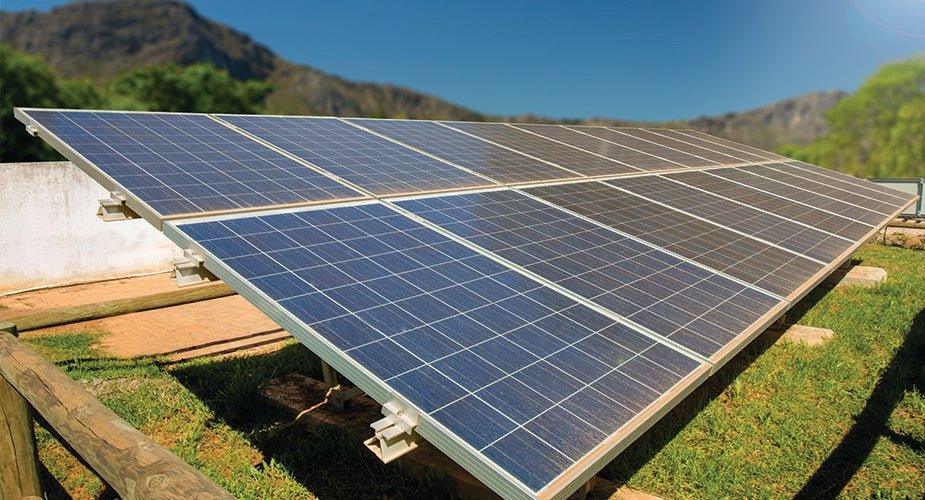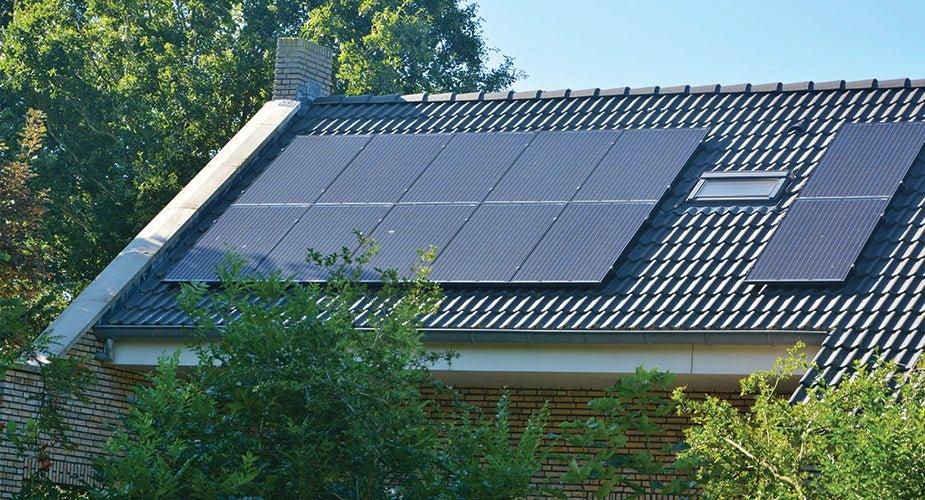In the realm of electricity, volts vs amps vs watts are fundamental concepts that govern the flow and utilization of electrical energy. Understanding these terms is crucial for selecting the appropriate electrical equipment, including portable solar generators. Let's delve deeper into each concept and unravel their intricate connection.
Your Quick Guide to Understanding Voltage, Amps, and Watts
To understand the concept of volts vs amps vs watts better, let us use the water hose analogy. Using this analogy will allow you to imagine how each of these concept work and how they affect each other.
Voltage (V): The Driving Force of Electricity
Voltage is the electrical potential difference between two points in a circuit. Imagine a water hose. The voltage is like the water pressure in the hose. The higher the pressure, the faster the water will flow. Similarly, the higher the voltage, the faster the electrons will flow through a circuit. Voltage is measured in volts (V) and the formula is found below.
Volts = Watts / Amps
Example: If a toaster consumes 1200 watts and 10 amps, the voltage can be calculated as:
Volts = 1200W / 10A
Volts = 120V
Amperage (A): The Amount of Electrical Flow
Amperage is the rate at which electrons flow through a circuit. Continuing with our water hose analogy, amperage is like the volume of water flowing through the hose. The larger the hose, the more water can flow at a given time. Similarly, the higher the amperage, the more electrons can flow through a circuit at a given time. Amperage is measured in amps (A) and the formula is found below.
Amps = Watts / Volts
Example: If a water heater consumes 3600 watts at 240 volts, the ampere can be calculated as:
Amps = 3600W / 240V
Amps = 15A
Wattage (W): The Measure of Electrical Power
Wattage is the rate at which electrical energy is transferred. In our analogy, it is like the amount of work the water in the hose can do. The higher the pressure and volume of water, the more work it can do. Wattage is measured in watts (W). Wattage is measured in watts (W) and the formula is found below.
Watts = Amps x Volts
Example: If a coffee maker draws 5 amps to operate at 120 volts, the wattage can be calculated as:
Watts = 5A x 120V
Watts = 600W
Voltage, Amps, and Watts in the World of Solar Generators
Now that we know that amperage vs wattage and amperage are interrelated, let us use them in a specific setup. Let us take a closer look at how these three concepts work in the world of portable solar generators.
Voltage is crucial for powering various devices in the context of portable solar generators. For instance, a 12V solar generator can effectively charge smartphones, tablets, and other small appliances. However, for larger appliances like laptops or mini-fridges, a higher voltage, such as 24V or 48V, is often required.
Moving forward, remember that amperage determines how quickly devices can be charged or powered. A portable solar generator with a higher amperage rating can charge devices faster than one with a lower amperage rating. For example, a 10A solar generator can charge a smartphone in about 2 hours, while a 20A solar generator can charge the same phone in about 1 hour.
Finally, let us not forget that wattage determines the maximum power output of the generator and the types of devices it can power. A portable solar generator with a higher wattage rating can power more demanding appliances, such as laptops, mini-fridges, or small power tools. For example, a 100W solar generator can power a laptop for a couple of hours, while a 500W generator can power the same laptop for about 10 hours.
Now, let us explore some actual portable solar generators for reference. Nature’s Generator is one of the most trusted and reliable solar & wind generator brands in the market at the moment. They have a number of portable solar generators that could cater to the different needs of their customers. Let’s have a quick look at some of their products and see their corresponding specifications.
|
Solar Generator |
Capacity |
Recharging Time |
Ports and Charges |
Appliances and Devices |
|---|---|---|---|---|
|
Nature's Generator Gold |
Inverter Output Power: 1800W max Output Waveform: Pure Sine Wave Output Voltage: 120V Output Frequency: 60Hz Battery Type: AGM Sealed Lead Acid Capacity: 12V 60Ah (720Wh) |
Using included AC Cord - Estimated recharge time: 10 - 15 hrs. Using Nature's Generator Power Panel - Estimated recharge time: 10 - 15 hrs. Using Nature's Generator Wind Turbine. (sold separately and charge times can vary depending on wind speed at the time of charging) |
Three 120V household AC outlets Two USB ports - 3A of combined power One 12V DC port (240W max) Expansion Port: 200A Fuse Charging AC Input (90W) Solar Charger: 200watt Wind Input (300W Max) |
32" LED TV = 12+ hrs Refrigerator = 8-12hrs Laptop = 12+ recharges Smartphone = 60+ recharges LED Light Bulb = 50+ hrs |
|
Nature's Generator Elite |
Inverter Output Power: 3600W max / 2880 continuous Output Waveform: Pure Sine Wave Output Voltage: 120V Output Frequency: 60Hz Battery Type: AGM Sealed Lead Acid Capacity: 12V 100Ah (1200Wh) |
Using included AC Cord - Estimated recharge time: 8 - 12 hrs. Using Nature's Generator Power Panel - Estimated recharge time: 10 - 12 hrs. Using Nature's Generator Wind Turbine. (sold separately and charge times can vary depending on wind speed at the time of charging) |
Three 120V household AC outlets Two USB ports - 3A of combined power One 12V DC port (240W max) Expansion Port: 350A Fuse Charging AC Input (190W) Solar Input (300W Max) Wind Input (300W Max) |
32" LED TV = 40+ hrs Refrigerator = 26-40 hrs Laptop = 40+ recharges Smartphone = 200+ recharges LED Light Bulb = 160+ hrs |
|
Powerhouse |
Inverter Output Power: 7200 watt max Output voltage: 240V Split Phase Output voltage: 120V Single Phase Output frequency: 60Hz Output Waveform: Pure sine wave Output Phase: Split phase Battery Type: AGM Sealed Lead Acid Capacity: 48V 100Ah (4800Wh) |
Using included AC Cord - Estimated recharge time: 7-8 hrs. Using Nature's Generator Power Panel - (may vary depending on the strength of sunlight at the time of charging) Using Nature's Generator Wind Turbine. (sold separately and charge times can vary depending on wind speed at the time of charging) |
Two 120V AC household AC outlets One 240V household AC outlets Four USB Type A ports 1 USB Type C port Port: 5V, up to 3A (15W) 12V DC Port: up to 20A (240W max) Expansion Port: 350A fuse AC Charger: 1300W, 120V AC Solar Charger: 2000W Wind Charger: 1000W |
32" LED TV = 80+ hrs Refrigerator = 50-80 hrs Laptop = 80+ recharges Smartphone = 400+ recharges LED Light Bulb = 330+ hrs |
Practical Applications in Portable Solar Generators
Understanding the concepts of volts vs amps vs watts is crucial for effectively utilizing portable solar generators. These three electrical units play a fundamental role in determining the compatibility of the generator with your devices and the amount of power it can deliver. Below are some practical applications for you once you know what watts, voltage, and amps are all about.
Choosing the Right Generator for Your Needs: When selecting a portable solar generator, consider the voltage, amperage, and wattage requirements of the devices you intend to power. Ensure the generator's output matches or exceeds the specific needs of your appliances.
Calculating Charging Time: To estimate the charging time for a device using a solar generator, divide the device's battery capacity (in watt-hours) by the generator's output wattage. For example, a 5000mAh smartphone battery (18.5 watt-hours) will take approximately 47 minutes to charge using a 200W solar generator.
Maximizing Efficiency: Optimize the power consumption of your devices to prolong the usage time of your portable solar generator. Turn off unnecessary features, adjust brightness settings, and disconnect devices when not in use.
Final Thoughts
In conclusion, navigating the world of electricity can be daunting, but understanding the fundamental concepts of volts, amps, and watts empowers you to make informed decisions about your electrical needs including portable solar generators. Voltage determines compatibility, amperage determines power delivery capacity and power consumption dictates the appropriate generator size. Whether you are an avid camper seeking off-grid adventures or a homeowner preparing for emergencies, understanding volts vs amps vs watts is the key to unlocking the full potential of portable solar generators.
* We want to give credit where credit is due. Professional writer, Ann Matthew, contributed research and content to this blog titled: Volts vs Amps vs Watts Thank you, Ann, for your contributions!






 10,000W LIFEPO4
10,000W LIFEPO4









